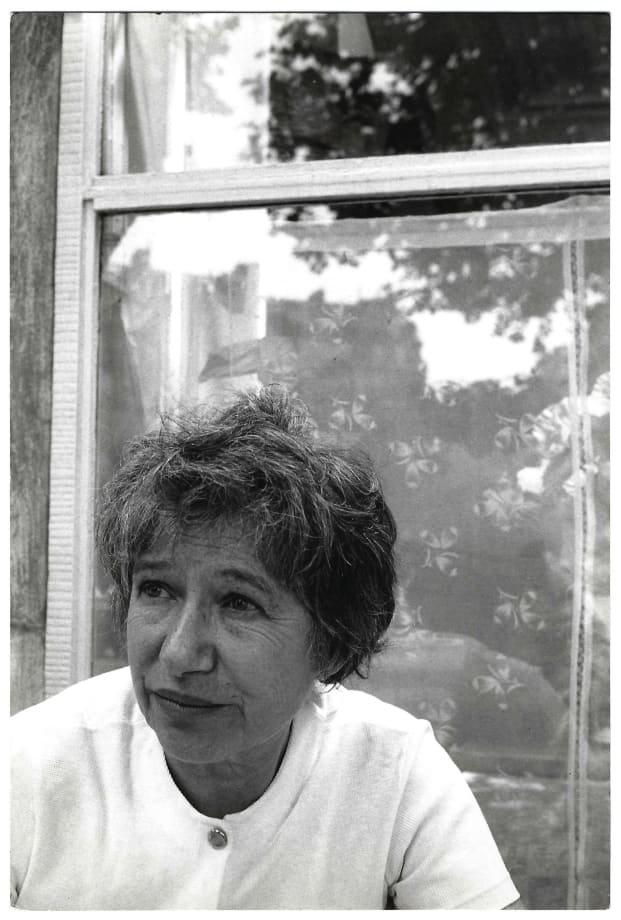"YOUR EASEL IS YOUR COUNTRY, REALLY – UNLESS YOU PAINT ON THE WALL! WHEREVER MY EASEL IS, THAT’S WHERE I AM."
Janice Biala, née Janice Tworkov — and at times known simply as 'Biala' — is acclaimed for her synthesis of techniques from the School of Paris and New York's Abstract Expressionists. Over her eight-decade career, she explored classical themes such as landscapes, still-life, and portraiture with a dynamic, gestural style rooted in life observation.
As an immigrant arriving from Russian-occupied Poland at age 10, Janice Tworkov grew up in a Jewish tenement on New York's Lower East Side, eventually decamping to Greenwich Village with her better-known brother, Jack Tworkov. Her love for art blossomed early, influenced by her favorite book, The Three Musketeers, and the work of Cézanne, which moved her to study at the Art Students League and the National Academy of Design.
By the late 1920s, Janice Biala, at this point largely known by only her last name, had built up a career, becoming a regular exhibitor at New York’s G.R.D. Studios. She hitchhiked her way into the artist colonies in Provincetown, Massachusetts — where she studied under Edward Dickinson, the extent of her formal training — and Woodstock, New York, where she forged friendships with David Smith, Dorothy Dehner, Lee Gatch, and William Zorach. In 1930, she traveled to Paris and fell in love with English novelist Ford Madox Ford. Through Ford, she built a social circle of prominent artists like Brancusi, Matisse, and Picasso, and Gertrude Stein, embedding herself in American bohemia in France. After Ford's death in 1939, Biala fled Europe under the pressure of the growing Nazi threat, saving his personal library and as many of her artworks as she could carry out of Europe.
Upon returning to New York, Biala embedded herself once again of the avant-garde scene around Washington Square, marrying illustrator Daniel “Alain” Brustlein. She secured representation by the Bignou Gallery and built a name for herself in the Abstract Expressionist movement. In 1947, Biala and Brustlein moved to Paris, traveling extensively across Europe. In 1950, she was one of three women invited to the pivotal Artist’s Session at Studio 35 in New York, and The Whitney Museum of American Art acquired her work in 1955.
Throughout the final decades of her life, Biala exhibited internationally, with her work evolving to include large landscapes and Parisian architecture. Her art at this time was characterized by an intimate, alluring blend of abstraction and imagist concerns.
Recognized for her contributions to both American and French art traditions, her legacy was highlighted in major exhibitions and features in publications like The New York Times. Upon her death in 2000, her impact was commemorated by art critic Roberta Smith, who praised Biala's trans-Atlantic influence and enduring artistic legacy.
